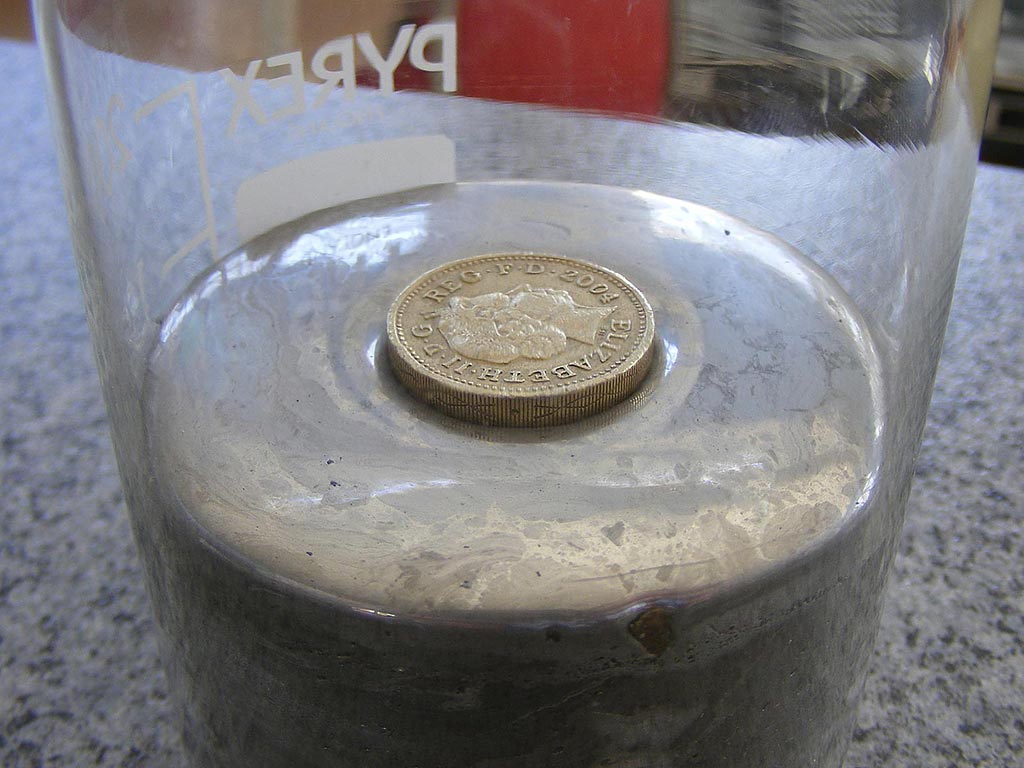Give an example of a homogeneous mixture.
Homogeneous mixtures are solutions (every part of the mixture is the same even though there are different substances mixed together). Ex: vinegar, air, Kool-Aid
Compare the densities of solids, liquids, and gases
solids - very dense liquids - some what dense gases - not dense
How does the viscosity of a liquid change in relation to temperature?
What is when temperature increases the viscosity decreases and as it cools the viscosity increases.
What particle theory point explains why a solute dissolves in a solvent?
The amount of solute that can dissolve in a given amount of solvent at a given temperature?
What is solubility
To INCREASE the viscosity of a GAS, what should you do to the temperature?
INCREASE the temperature (this increases collisions between particles which makes it harder to flow).
melting - solid turning into a liquid
ou were adding a solute to water (the solvent) in a beaker and it was dissolving nicely. You added a little bit more solute and suddenly it started forming crystals in the beaker. This is now called a __________ solution.
Supersaturated!
What is the formula to calculate flow rate?
flow rate = mL/second OR flow rate = L/second
Using Archimedes' Principle, you can calculate the buoyant force by...?
Calculating the weight of the FLUID DISPLACED by the object.
A heterogenous mixture that will settle eventually is called a _______________
suspension
Why do gases have no set volume?
They are able to move in all directions and spread out to fill the container they are in.
1) What is the difference between MASS and WEIGHT and what are their units?
1) MASS - amount of matter in a substance (kg). WEIGHT - the force of gravity exerted on an object (Newtons).
You want to increase the viscosity of a liquid. To do this you must 1) ________ temperature. 2) Why?
1) DECREASE 2) this increases attractive forces between liquid particles, making it more viscous (flows more slowly).
Machine oil has a density of 0.9 g/mL. Ethyl alcohol has a density of 0.8 g/mL. 1) Which has greater density? 2) Which will float on top of the other one?
1) Machine oil has greater density (0.9 > 0.8) 2) Therefore, knowing that denser things SINK, the ethyl alcohol will FLOAT on top of the machine oil, because it's density is lower.
The tool used to measure volume of a fluid is called....
a graduated cylinder
Describe the 5 points of the particle theory/model
What is 1. all substances are made up of particles 2. particles in a pure substance are the same. Different pure substances have different particles 3. particles have space between them 4. particles always move and increase/decrease in movement because of temperature 5. particles in a substance attract each other. Strength of attractive forces depends on particle type.
True or false: liquids are always less dense than solids
FALSE! Liquid mercury is a VERY dense substance
Substance A has a flow rate of 2mL/s. Substance B is less viscous that substance A. What is any flow rate substance B would have at the same temperature?
A flow rate of anything HIGHER than 2 mL/s makes sense!
The ballast tank in the submarine acts very similarly to the swim bladder in a fish. For both, they increase their average density to sink. The fish's bladder expels air to sink, whereas the ballast tank does what to sink?
The ballast tank fills with seawater, which pushes the air in the ballast tank through the top vents to the outside. This increases the average density of the submarine and so it sinks.
Mohamed and his friend Omar wonder how solubility affects density. They have 3 beakers. One with 100mL of distilled water, one with 10 g of salt dissolved in 100 mL of distilled water and one with 30 g of salt dissolved at 100mL of water. The temperature of the water in all cases was 20 degrees Celcius. What is the manipulated, responding and control variable for this experiment?
Manipulated Variable: Amount of salt dissolved
Responding Variable: Density
Control Variables: volume of water, temperature of water